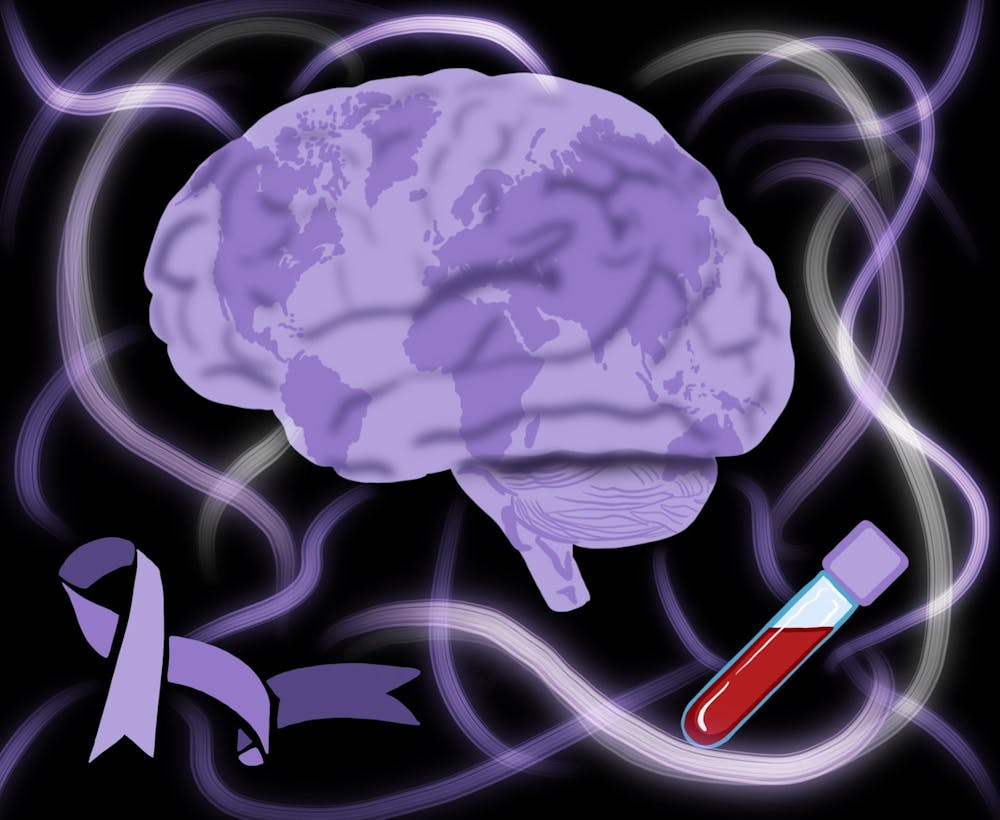A new study, led in part by the University, will attempt to see if biomarkers in blood tests can help screen for Alzheimer’s disease.
In partnership with the Warren Alpert Foundation, the University’s Carney Institute for Brain Science is supporting the Memory and Aging Program at Providence-based Butler Hospital in launching an observational study.
The Butler-Brown research team — led by Stephen Salloway, professor of psychiatry and human behavior and neurology — plans to use blood-based assays from healthy individuals who may have a higher risk for developing Alzheimer’s as a biomarker — or biological indicator — to study the preclinical stages of Alzheimer’s and better assess disease progression.
The study focuses on early diagnosis because “the events that distinguish Alzheimer's disease at the molecular level ... are actually starting one to two decades before the onset of cognitive symptoms,” Project Manager Phil Caffery wrote in an email to The Herald. “It is in the early stages of the disease where treatments would have the greatest chances for success.”
One of the study’s long-term goals is a routine blood test for AD that would make diagnostic assessments for the disease more accessible and less invasive, according to Caffery.
A blood test would also help with “early intervention for Alzheimer’s treatments and lifestyle changes,” said Louisa Thompson, assistant professor of psychiatry and human behavior and a co-investigator in the study.
The team at Butler and Brown is also partnering with the Swedish study BIOmarkers For Identifying Neurodegenerative Disorders Early and Reliably (BIOFINDER) led by Oskar Hansson, professor of neurology at Lund University, according to William Menard, research operations manager at Butler’s Memory and Aging Program.
“Dr. Hansson’s group is one of the leading international research groups in developing blood-based Alzheimer’s disease markers that can also distinguish older adults with the brain-based Alzheimer’s disease pathologies,” Caffery wrote.
Menard added that BIOFINDER’s study features a “similar parallel protocol,” offering an “international aspect to the study — to be able to look at data from both sides of the Atlantic.”
To collect necessary data for the blood assay, the Butler-Brown study “emphasizes methods that are minimally invasive and scalable,” Thompson said. “It’s just not feasible to do advanced neuroimaging for all older adults. … Things like blood tests, retinal imaging and cognitive screening are very easy to implement in a number of clinical medical settings — so that’s the focus.”
The research teams in the U.S. and Sweden are working to “make protocols as similar as possible” between the sites, Thompson added.
"Although harmonizing study procedures of this complex study can be challenging, the project will allow us to collect the data from study participants who are geographically and racially diverse,” Hwamee Oh, professor of psychiatry and human behavior and a co-investigator in the study, wrote in an email to The Herald. “The findings from the study will be more generalizable than those of a study conducted in one region.”
One slight difference in the two teams’ protocols is the type of diagnostic testing conducted, according to Thomspon.
While the project emphasizes less invasive procedures for screening, the U.S. portion of the study will use neurological imaging including positron emission tomography scans — an imaging method that injects radioligand, a radioactive substance, into the body to help researchers measure participants’ metabolic activities. The imaging, in turn, helps researchers visualize Alzheimer’s disease pathology in the brain.
“We hypothesize that there will be a strong association between the level of a biomarker called p-tau217 in the blood and the level of cerebral amyloid plaques that we see in the brain using a PET scan,” Thompson said.
The Swedish team will use a lumbar puncture — a medical procedure in which a needle is inserted between two vertebrae and a sample of cerebrospinal fluid is collected for diagnostic testing — in place of a brain PET scan for their screening.
“We know that lumbar puncture is far more acceptable for patients in Europe and other countries, and in the United States people have a much stronger aversion to that test so we tend not to use it,” Thompson said.
“We have very different health care systems and different languages that we’re using for the study, so there tends to be just general differences in the way that research studies are conducted,” she added.
The study will also feature slightly different memory, language and attention assessments on iPads, Thompson said. Participation in the study will last approximately five years.
Currently, about 16 participants are enrolled in the Butler-Brown study — cognitively healthy individuals 50 to 80 years old, according to Menard; the study is aiming to reach a total of 200 participants over the next two years, according to Menard.
“We’ve just started to screen for this project, so it’s been really great to see the amount of interest there is,” Thompson said. She added that the project is prioritizing recruiting participants from underrepresented populations in Rhode Island.
“BIPOC community members have a higher risk of developing Alzheimer’s disease, being diagnosed later, being misdiagnosed or not diagnosed at all for memory loss,” Caffery wrote.
The Memory and Aging Program is also part of a national effort to “better understand how we can share Alzheimer’s disease risk information with older adults,” Thompson said.
She added that “based on our prior research, we know that sharing information about genetic risk for Alzheimer’s and … test results with participants is something that most people find very helpful, so we want to be able to give back to our participants who are giving their time and energy to contribute to the research.”
Gabriella was a Science & Research editor at The Herald.





